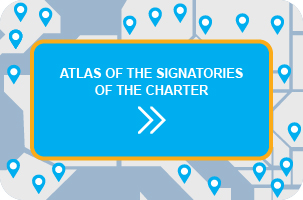Gender Mainstreaming in transport planning
The Swedish Association of Local Authorities and Regions (SALAR) has recently published a folder with guidelines on how to work more efficiently with gender mainstreaming in transport planning.
How is transport planning related to gender equality?
Urban planning is about valuing and assessing the impact of alternative measures based on different aspects such as economic, environmental, health-related, technical ones. The estimates describe the impact of various alternatives in relation to these aspects.
As an essential part of citizens’ daily life, the transport system must be adapted according to the needs and wishes of both women and men. The possibilities of getting to one place or another determine people’s opportunities and its design can have an impact on the choices citizens make. It is therefore essential to integrate the gender perspective in the entire planning process and include goals for gender equality that are related to the objectives of the whole project.
How do you include the gender perspective in transport planning?
Even though many local and regional authorities have the ambition to use gender mainstreaming as a strategy in their work on urban planning, there are very few examples of practically applicable methods for systematic gender assement.
One way to including a gender perspective in urban planning for transport can be to analyze why differences based on gender exist in the public sphere and trying to find ways to eliminate inequalities.
It can also be to find solutions better adapted to different groups in the society. Urban planners must therefore bear in mind what advantages and disadvantages there are and undertake specific actions for different groups. This can be done by mapping what consequences (obstacles and opportunities) a certain public transport or infrastructure will have on women and men.
The gender perspective should constitute a factor as essential as the economic or the environmental aspect in order to make urban transport more equal.
It is underlined that there is no single method for gender assessment in transport planning but that it must be adapted according to specific projects. However, gender assessment of good quality is characterized by being adequate, effective, knowledge-based, and open to participation and criticism.
The following questions could serve as a basis for discussion:
- Is gender based statistics accessible for the specific projects?
- Has studies on the travel patterns been conducted including the opinions of both women and men?
- Where are women and men working in the municipality? Are female-dominated workplaces and male-dominated workplaces equally accessible by public transport?
- Can public transportation be used by both women and men to access leisure activities?
- Have efforts been made to reach both women and men in public consultations concerning public transport?
- What do women and men, boys and girls think about the transport options to their working place or school?
- Does public transport allow parents to share responsibility for the care of children and household work? – How are workplaces situated in relation to day care centres and schools?
- Are there any established guidelines on how the gender perspective in transport planning could be monitored and measured?
- Is there a strategy on how to make sure that the gender perspective is considered by partners in the project?
- Have studies on citizens’ feeling of security in public spheres been conducted?
For more information please read Kön i trafiken (Information in Swedish).













